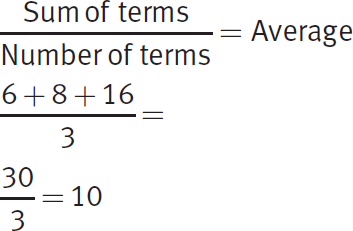The Kaplan Method for ASVAB Math Questions
Working quickly and efficiently is essential to maximizing your score on these sections. To accomplish this, use the Kaplan Method for ASVAB Math Questions.
Step 1. Analyze the information given.
Read the entire question carefully before you start solving the problem. If you don’t read the question carefully, you may make a careless mistake or overlook the simplest approach to answering the question.
Step 2. Identify what you are being asked for.
Before you choose your approach, make sure you know what you’re solving for. In other words, what does the correct answer choice represent? This is an important step to keep you from falling for tempting wrong answer choices. For example, if you are given an equation with two variables, x and y, identify whether you are solving for x, for y, or for something else. This step is important because the ASVAB may give you wrong answer choices that represent the “right answer to the wrong question.” That is, if you are asked to solve for x, one wrong answer choice might represent the value of y.
Step 3. Solve strategically.
Once you understand what the question is asking for, it’s time to look for the most strategic approach. Use your analysis from Steps 1 and 2 to find the most efficient route to the correct answer. This step might involve performing calculations (that is, “doing the math”), or it might be the case that applying a strategy would get you to the correct answer more quickly. This chapter will discuss these strategic approaches.
Step 4. Confirm your answer.
Reread the question after you select your answer. Make sure you’ve answered the question asked. If you notice that you missed something earlier, rework the problem and change your answer if necessary.
Here’s an example of the Kaplan Method for ASVAB Math in action.
| Question | Analysis |
|---|---|
| One bag contains 6 pieces of candy, another bag contains 8 pieces, and a third bag contains 16 pieces. What is the average number of pieces of candy in a single bag? | Step 1: The question tells you the number of pieces of candy in three bags. |
| Step 2: Your task is to calculate the average number of candies in one bag. | |
| (A) 6 (B) 8 (C) 10 (D) 30 |
Step 3: Use the average formula:
The average is 10, answer choice (C). |
| Step 4: Don’t rework the math from scratch; rather, ask yourself whether the answer makes sense given what you were asked for. Does 10 seem like a likely average given the numbers 6, 8, and 16? Yes: Since the average of a set of numbers has a value that’s between the smallest and largest numbers in the set, 10 makes sense as an answer. |